- Date
Top 7 Web Analytics Tool Picks for Smarter Insights in 2025
 Andrii Romasiun
Andrii Romasiun
In 2025, the digital world evolves at a rapid pace, making it essential for businesses to extract smarter, actionable insights from every web analytics tool they use. With user behavior shifting and privacy standards tightening, the right solution can be the difference between growth and missed opportunity.
This article serves as your guide to the top 7 web analytics tool options that empower businesses and website owners to make truly data-driven decisions. You will discover a side-by-side comparison of features, pricing, privacy measures, and standout strengths tailored for various business needs.
We will explore how web analytics has changed, what to look for in a tool, in-depth reviews of leading platforms, and a quick comparison to help you choose. Ready to unlock better insights from your data? Let’s dive in.
The Evolution of Web Analytics: Trends & Challenges in 2025
The web analytics tool landscape is transforming rapidly in 2025. Businesses now demand more than simple data—they need actionable insights, real-time information, and privacy-first solutions. As digital experiences become more complex, the expectations for what a web analytics tool can deliver have never been higher.
Shifting from Basic Metrics to Actionable Insights
In 2025, the web analytics tool has evolved far beyond simply counting pageviews or sessions. Today’s platforms map user journeys, analyze engagement patterns, and use AI to predict future behaviors. Automated anomaly detection helps teams spot trends or issues instantly, taking the guesswork out of decision-making.
For example, leading solutions now provide predictive analytics, enabling businesses to forecast traffic spikes or conversion drops before they happen. By focusing on actionable insights rather than raw numbers, a modern web analytics tool empowers teams to act decisively and drive growth.
Growing Importance of Privacy and Compliance
Regulatory pressure is reshaping every web analytics tool on the market. With GDPR, CCPA, and new privacy laws worldwide, businesses must prioritize user rights and transparency. The need for cookieless, anonymous tracking is greater than ever, as companies look to avoid intrusive cookie banners and respect visitor privacy.
Many organizations now seek platforms designed from the ground up for compliance, as outlined in this Privacy-Friendly Analytics Guide. Privacy-first features, such as anonymized data collection and flexible consent controls, have become essential for any serious web analytics tool.
Real-Time Data and Customization as Standard
Real-time insights are now the norm for any competitive web analytics tool. Teams need instant access to traffic patterns, user actions, and sales data to make timely decisions. Custom dashboards and automated alerts ensure each department—marketing, development, or product—can monitor the metrics that matter most.
For instance, e-commerce managers track sales surges live, allowing rapid responses to campaigns or technical issues. This level of customization and immediacy is a must-have in today’s analytics landscape.
Integration with Marketing and Business Stacks
A web analytics tool must fit seamlessly into the broader business ecosystem. Integration with CRMs, advertising platforms, and automation tools is crucial for unified reporting and campaign optimization. By connecting analytics data to marketing and sales systems, businesses gain a holistic view of the customer journey.
This interconnected approach enables teams to launch personalized campaigns, track ROI, and streamline workflows. The right web analytics tool acts as the backbone for data-driven marketing strategies.
The Rise of Open-Source and Ethical Analytics
Transparency and data ownership are top priorities in 2025. Many organizations are moving toward open-source web analytics tool options, which offer full control over data and eliminate third-party dependencies. This shift is especially notable among privacy-conscious businesses and sectors with strict compliance needs.
Open-source analytics solutions also foster community-driven innovation, giving users the flexibility to customize features to their unique requirements. Ethical data handling and clear reporting practices are becoming the gold standard for any trusted analytics provider.
Key Challenges Facing Users in 2025
Despite advances, challenges remain for anyone implementing a web analytics tool. Striking the right balance between deep insights and user-friendly interfaces is difficult. Data overload can overwhelm teams, making it hard to extract meaningful trends without sophisticated filtering and visualization.
Browser privacy features and widespread ad blockers also pose hurdles for accurate data collection. As the landscape evolves, businesses must adapt their analytics strategies to maintain reliability and compliance.
How to Choose the Right Web Analytics Tool for Your Needs
Selecting the right web analytics tool in 2025 is a strategic decision that can shape your business growth. Each organization has unique needs, so it is essential to match your choice with your goals, privacy requirements, and workflow. Below, we break down the key factors to guide your decision, ensuring you invest in a solution that delivers actionable insights and long-term value.
Identify Your Core Analytics Goals
Begin by defining what you want from a web analytics tool. Are you tracking basic website visitor stats, or do you need advanced user journey mapping and conversion funnels? For example, a content publisher may prioritize pageviews and engagement, while a SaaS platform needs detailed user behavior and retention metrics. Clarifying your objectives ensures you select a web analytics tool tailored to your team's KPIs and business model.
Privacy, Data Ownership, and Compliance Considerations
Privacy is non-negotiable in 2025. Evaluate whether your business requires GDPR compliance, cookieless tracking, or even self-hosted analytics. European companies, in particular, face strict data regulations. Look for a web analytics tool that minimizes personal data collection and offers transparent data ownership. For a side-by-side review of privacy-focused solutions, explore this Alternatives to Google Analytics guide.
Feature Set and Customization
The right web analytics tool should offer customizable dashboards, event tracking, and flexible reporting. Consider if you need integrations with platforms like Slack, Zapier, or CRMs. Marketing teams may prioritize UTM campaign tracking, while developers seek API access. Test the tool's ability to create custom reports and alerts, ensuring it adapts to your processes and delivers the insights you need.
Scalability and Performance
Choose a web analytics tool that can handle your current and projected website traffic. E-commerce businesses often experience seasonal spikes, so ensure the platform scales without data loss or slowdowns. Assess performance during peak periods and verify that the tool maintains accuracy as your data volume grows. Scalability is key for sustainable analytics as your business evolves.
Pricing Models and Total Cost of Ownership
Understand the pricing structure before committing to a web analytics tool. Some offer free tiers, while others charge based on events or traffic volume. Watch for hidden costs, such as premium features or increased data limits. Startups may benefit from flat-rate or free solutions, whereas enterprises might require custom plans. Always align your budget with expected ROI and long-term needs.
Support, Community, and Documentation
Reliable support and active communities are crucial for long-term success with any web analytics tool. Check for responsive customer service, detailed documentation, and user forums. Open-source options often have vibrant GitHub repositories and chat channels, making troubleshooting easier. Strong support ensures you can resolve issues quickly and maximize the platform’s potential as your analytics needs evolve.
Top 7 Web Analytics Tool Picks for Smarter Insights in 2025
Choosing the right web analytics tool in 2025 is more critical than ever. The landscape is evolving rapidly, and businesses need platforms that deliver actionable, privacy-focused insights. Below you'll find detailed reviews of seven standout web analytics tool solutions, each offering unique strengths for different needs. Whether you're a startup, enterprise, marketer, or developer, this guide will help you navigate your options and invest in the tool that aligns with your goals.
Swetrix - Privacy-First, Open-Source Analytics
Swetrix stands out as a privacy-first, open-source web analytics tool designed for modern businesses that demand transparency and control. With 100% GDPR-compliance and full data ownership, Swetrix empowers organizations to collect meaningful insights without compromising user privacy.

Key features include cookieless tracking, real-time dashboards, custom event tracking, and robust error monitoring. Swetrix supports customizable alerts sent directly to Slack, Discord, or Telegram, making it easy for teams to stay informed. API access ensures seamless integration with your existing stack, while flexible deployment options let you choose between a managed cloud platform or a free, self-hosted Community Edition.
Pricing for the cloud version starts at $19 per month for 100,000 events. The self-hosted option is free, appealing to developers and privacy-conscious organizations. Swetrix requires no cookie banners, helping sites maintain a clean user experience.
Pros:
- Ethical, privacy-centric design
- Highly customizable and intuitive UI
- Open-source flexibility and transparency
Cons:
- No free tier for the managed cloud
- Advanced integrations may require technical setup
Swetrix is an ideal web analytics tool for EU-based companies, startups, agencies, and teams prioritizing privacy and collaboration. For a broader comparison of leading solutions, you can explore the Top 10 Site Analytics Tools to see how Swetrix stacks up in detail.
Mixpanel
Mixpanel is a powerful web analytics tool focused on event-based tracking, user retention, and in-depth funnel analysis. Its core strength lies in understanding user behavior across web and mobile apps, making it a favorite among SaaS companies and product teams.
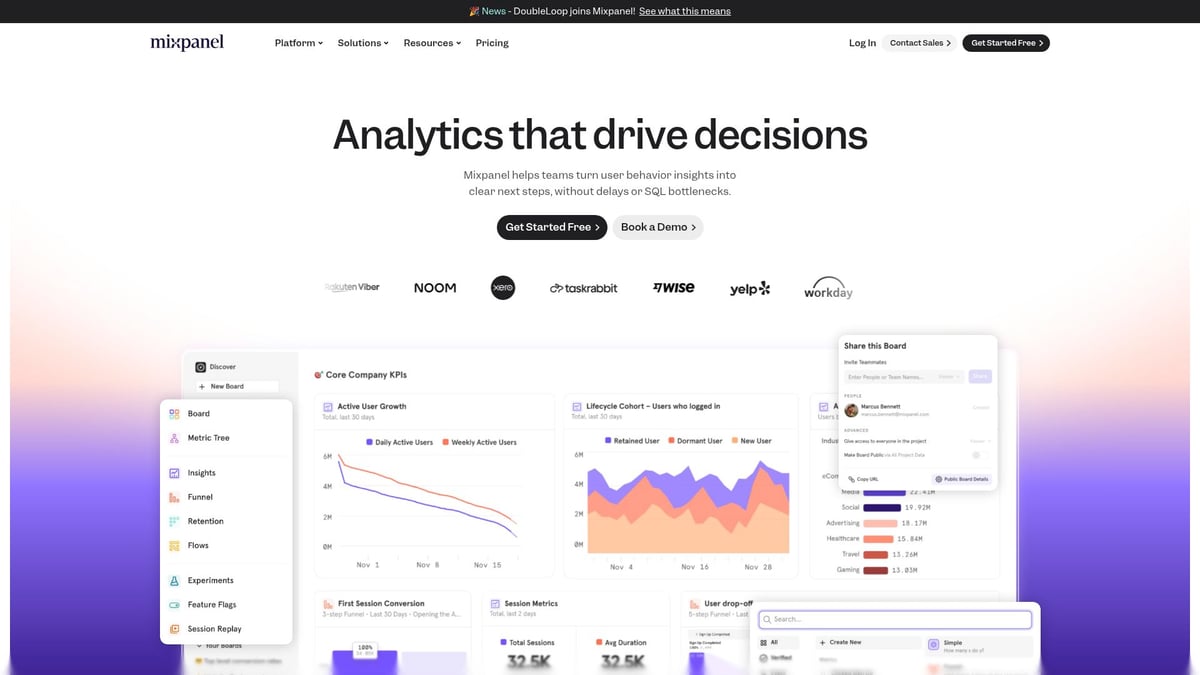
The platform offers real-time reporting, customizable dashboards, and advanced segmentation. Features such as A/B testing, predictive analytics, and cohort analysis help organizations optimize product performance and drive growth. Mixpanel's intuitive interface allows teams to build conversion funnels, track custom events, and visualize user journeys without extensive technical expertise.
Pricing starts with a generous free plan, while paid options begin at $20 per month. Advanced features, including deeper analytics and integrations, are available on higher tiers. Mixpanel integrates with marketing, CRM, and automation platforms, streamlining workflows and campaign measurement.
Pros:
- Deep behavioral insights and segmentation
- Easy setup for conversion funnels
- Strong integrations with other tools
Cons:
- Steeper learning curve for beginners
- Some essential features are locked behind paid plans
Mixpanel excels as a web analytics tool for product optimization, user engagement analysis, and conversion rate improvement. It is especially valuable for teams seeking actionable insights to fuel data-driven decisions.
Matomo
Matomo is a trusted open-source web analytics tool that delivers strong privacy and data control. Organizations can deploy Matomo on-premise or opt for managed cloud hosting, ensuring flexibility for various compliance requirements.
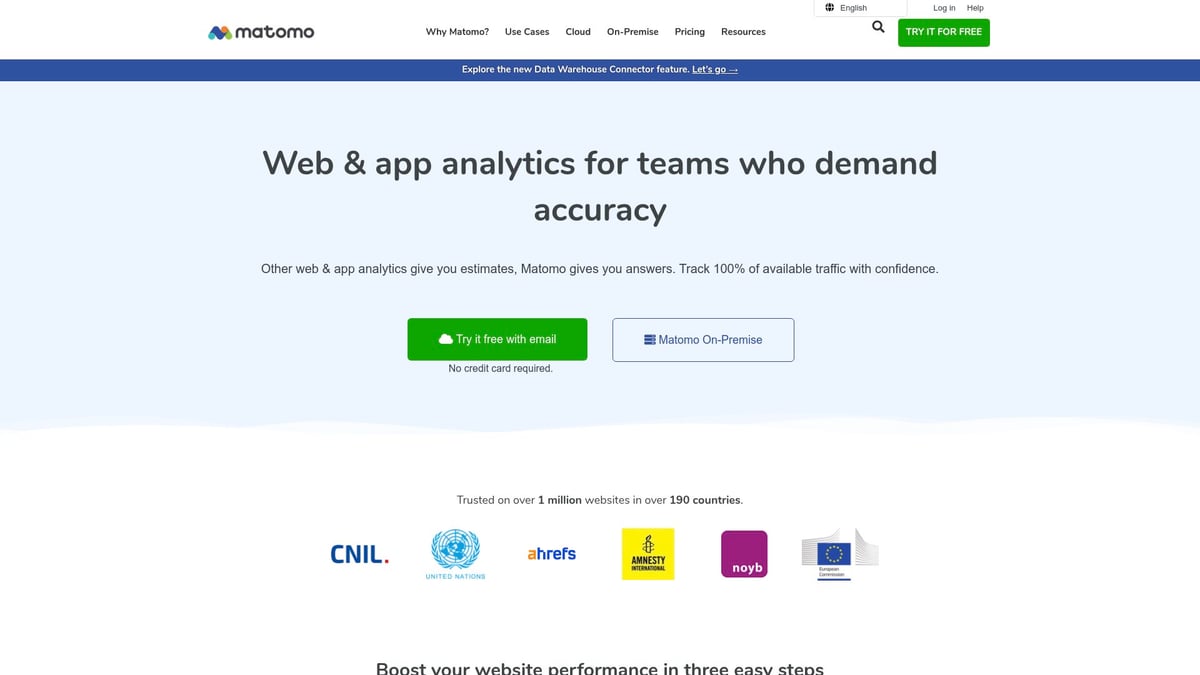
Key features include real-time analytics, conversion optimization, custom reporting, heatmaps, session recording, and an integrated tag manager. Matomo is renowned for its no data sampling policy, giving users access to complete, unsampled datasets for accurate analysis.
Pricing is competitive, with self-hosted deployments free and cloud plans starting at $23 per month. Matomo's extensive plugin ecosystem enables deep customization, while GDPR-compliance and full data ownership appeal to regulated industries.
Pros:
- Full control over data and privacy
- Highly customizable via plugins
- Strong compliance features
Cons:
- Technical expertise needed for self-hosted setup
- User interface is less modern than other platforms
Matomo is the web analytics tool of choice for enterprises, government, healthcare, and any business with strict data management needs.
Google Analytics
Google Analytics remains the most widely adopted web analytics tool, offering comprehensive reporting, robust integrations, and a feature-rich free tier. Its latest GA4 version provides real-time analytics, audience segmentation, conversion and e-commerce tracking, and customizable dashboards.
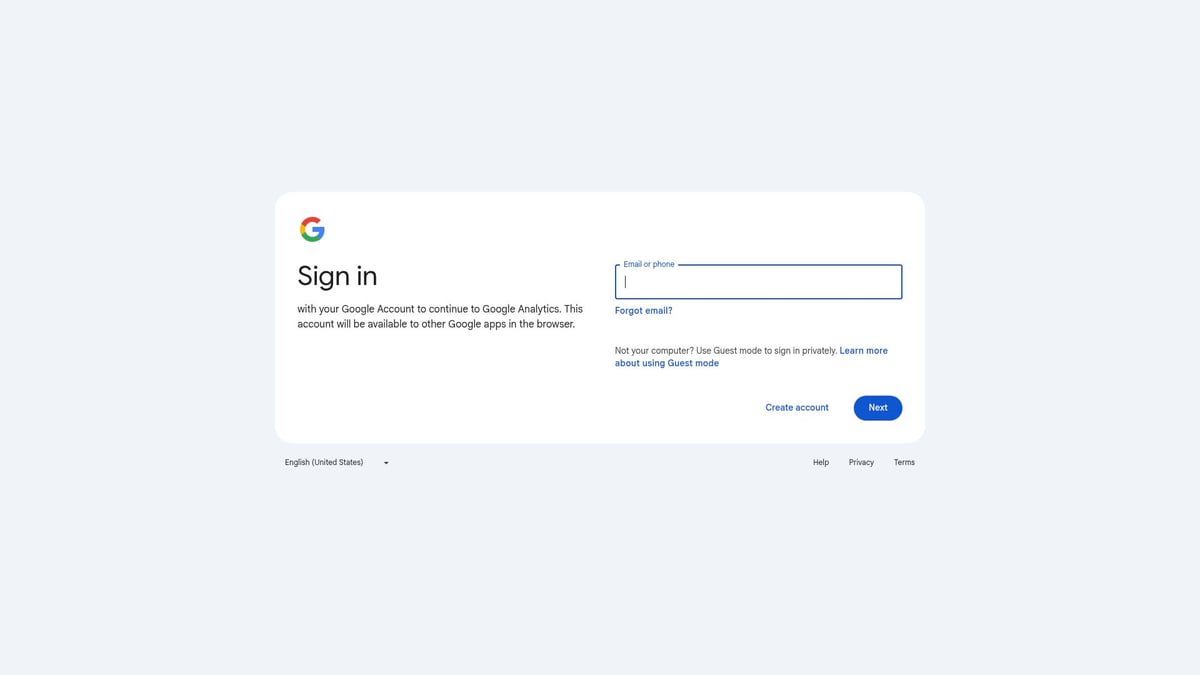
The platform integrates seamlessly with Google Ads, Search Console, and Tag Manager, making it a go-to for marketers seeking holistic campaign insights. Google Analytics supports businesses of all sizes, from bloggers to large e-commerce operations.
Pros:
- Free, powerful, and widely supported
- Deep integration with the Google ecosystem
- Extensive documentation and community support
Cons:
- Privacy concerns, especially regarding data processing
- Data sampling in the free version can limit accuracy
- Complex interface may overwhelm beginners
Google Analytics is an essential web analytics tool for broad audience analysis, marketing attribution, and campaign performance tracking.
Hotjar
Hotjar is a unique web analytics tool specializing in user experience analytics. It helps businesses visualize how visitors interact with their sites through heatmaps, session recordings, surveys, and conversion funnels.
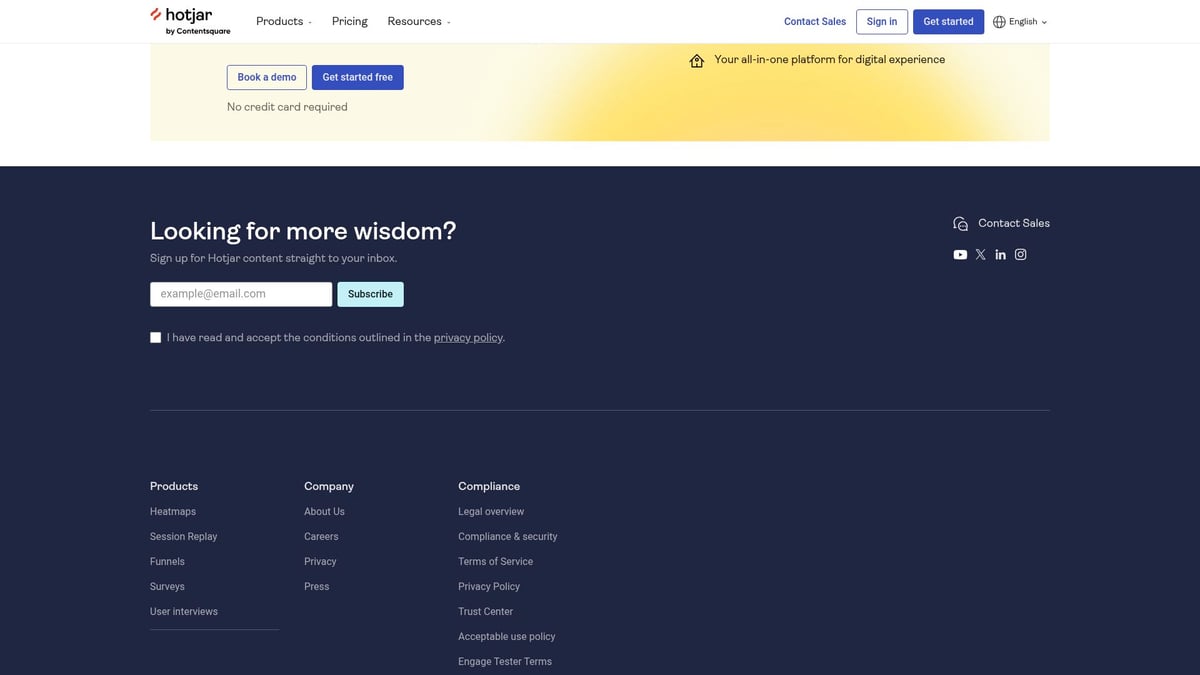
Hotjar's strength lies in combining quantitative and qualitative insights, offering a clear view into user behavior and pain points. With a simple setup, teams can quickly deploy heatmaps or feedback polls to gather actionable data.
Pricing includes a free basic plan, while paid options start at $39 per month. Data retention is limited on the free tier, but all plans offer an intuitive interface and easy implementation.
Pros:
- Visualizes user journeys and pain points
- Combines behavioral data with direct user feedback
- Intuitive and quick to deploy
Cons:
- Limited traditional analytics features
- Data retention constraints on free plan
Hotjar is the perfect web analytics tool for UX optimization, landing page testing, and improving customer journeys.
MonsterInsights
MonsterInsights is the leading WordPress web analytics tool, streamlining Google Analytics integration for site owners without technical expertise. Its user-friendly plugin brings actionable insights directly into the WordPress dashboard.
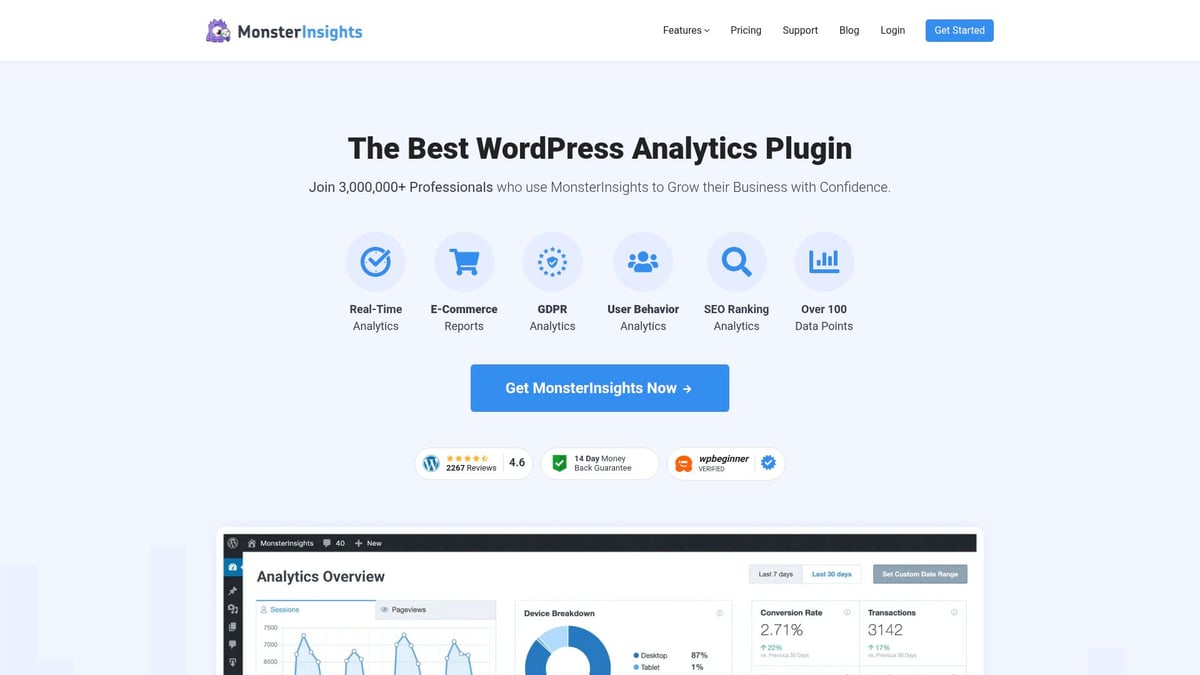
Features include e-commerce tracking, custom dimensions, popular post analytics, and easy setup with no coding required. MonsterInsights tailors its dashboards for bloggers, small businesses, and e-commerce sites, making data-driven decisions accessible to everyone.
The plugin offers a free version, with premium plans starting at $99.60 per year. Advanced features, such as enhanced e-commerce reporting and custom event tracking, are available on paid tiers.
Pros:
- Seamless Google Analytics integration for WordPress
- Actionable, easy-to-read reports
- Saves time for non-technical users
Cons:
- Exclusively for WordPress sites
- Premium features require a paid plan
MonsterInsights is an excellent web analytics tool for content performance tracking and small business analytics on WordPress.
SimilarWeb
SimilarWeb offers a different perspective as a web analytics tool, focusing on competitive intelligence and market research. It provides website traffic estimates, audience demographics, referral sources, and in-depth competitor analysis.
Digital marketers, agencies, and enterprises use SimilarWeb to benchmark performance, identify industry trends, and make strategic decisions. The platform covers global data, helping businesses spot new opportunities and monitor rivals.
A free plan offers limited access, while premium packages (custom pricing) unlock the full suite of features. SimilarWeb is particularly valuable for campaign benchmarking and market entry research.
Pros:
- Outstanding for competitor analysis and benchmarking
- Global data coverage
- Easy comparison with industry peers
Cons:
- Traffic data are estimates, not exact figures
- Full access can be expensive
SimilarWeb is the web analytics tool of choice for organizations needing market intelligence and a competitive edge.
Quick Comparison Table: Features, Pricing & Use Cases
Selecting the right web analytics tool in 2025 means balancing privacy, features, and value. The table below provides a side-by-side comparison of the top platforms, making it easier to choose based on your business needs. For a deeper understanding of what defines a web analytics tool, see this What is Web Analytics guide.
| Tool | Privacy/Compliance | Event Tracking | Real-Time Data | Integrations | Pricing | Target Audience | Deployment | Best For |
|---|---|---|---|---|---|---|---|---|
| Swetrix | GDPR, cookieless | Yes | Yes | Slack, Discord, API | $19/mo, free self-host | Privacy-focused orgs | Cloud, Self-host | Privacy, Alerts |
| Mixpanel | GDPR | Yes | Yes | CRMs, Ad platforms | Free, from $20/mo | SaaS, Product teams | Cloud | Product Analytics |
| Matomo | GDPR, full ownership | Yes | Yes | Plugins, Tag Mgr | Free, from $23/mo | Enterprises, Regulated | Cloud, Self-host | Privacy, Large Scale |
| Google Analytics | Some privacy, sampling | Yes | Yes | Google Ads, Tag Mgr | Free, GA360 custom | All businesses | Cloud | Marketing, Broad Use |
| Hotjar | GDPR | Limited | Yes | Zapier, Slack | Free, from $39/mo | UX, Marketers, E-commerce | Cloud | UX, Behavior |
| MonsterInsights | GA Privacy | Yes (via GA) | Yes | WordPress plugins | Free, from $99.60/yr | WP site owners, Bloggers | WordPress | WordPress, Ease |
| SimilarWeb | Some privacy | No | Yes | Ad platforms | Free limited, custom | Marketers, Agencies | Cloud | Competitive Intel |
Key Takeaways:
- Swetrix and Matomo stand out as the best web analytics tool choices for privacy and data ownership.
- Mixpanel excels for product teams needing advanced event tracking and user journey analysis.
- Hotjar is ideal for visualizing behavior and improving UX.
- MonsterInsights offers the most seamless analytics for WordPress users.
- Google Analytics remains a versatile, free solution for broad use, while SimilarWeb is unmatched for competitive research.
Evaluate your priorities—privacy, user behavior, integrations, or market intelligence—to identify the best web analytics tool for your organization.
Maximizing Value: Best Practices for Implementing Web Analytics in 2025
Harnessing the full potential of any web analytics tool requires more than just installation. To drive smarter business outcomes in 2025, follow these proven best practices and ensure your analytics investment delivers maximum value.
Set Clear Objectives and KPIs
Begin by defining what you want to achieve with your web analytics tool. Set specific, measurable goals that align with business outcomes, such as boosting conversions or reducing churn.
Establish clear KPIs for each team, ensuring everyone knows how success is measured. This focus helps your web analytics tool provide actionable insights rather than overwhelming data.
Combine Quantitative and Qualitative Insights
A robust web analytics tool should capture both numbers and user feedback. Quantitative data reveals what users do, while qualitative sources like surveys explain why.
Pair click maps and funnel analysis with user polls to uncover hidden pain points. This balanced approach leads to smarter optimization and better user experiences.
Prioritize Privacy and Transparency
In 2025, privacy is not optional. Choose a web analytics tool that supports GDPR and global compliance, offering features like cookieless tracking and anonymized data collection.
Transparency builds trust with users. For more on evolving privacy expectations and trends, read about web analytics trends shaping digital marketing.
Integrate Analytics with Your Marketing Stack
Maximize the impact of your web analytics tool by connecting it to your email, CRM, and ad platforms. Integrated data enables closed-loop reporting, showing which campaigns drive real results.
Automate reporting and share insights across departments for a unified growth strategy.
Regularly Audit and Update Tracking
Websites change frequently, which can break analytics tracking. Schedule regular audits of your web analytics tool setup, reviewing events and tags for accuracy.
Leverage built-in alerts to catch tracking errors early and maintain data integrity.
Foster a Data-Driven Culture
Make analytics accessible to all key stakeholders, not just analysts. Train teams to interpret dashboards and encourage questions about data.
A web analytics tool is most effective when everyone can act on its insights, driving continuous improvement.
Monitor for Industry Changes
Stay informed about new regulations, browser updates, and emerging analytics trends. Adapt your web analytics tool setup to remain compliant and effective.
As you explore the top web analytics tools for 2025, it is clear that privacy, actionable insights, and ease of use are more important than ever. If you are looking for a solution that puts your users first, respects data ownership, and offers intuitive dashboards without the hassle of cookie banners, Swetrix stands out as a powerful and ethical choice. You deserve analytics that keep pace with the evolving digital landscape and help you make smarter decisions with confidence.
Ready to see how Swetrix can empower your business? Try Swetrix today